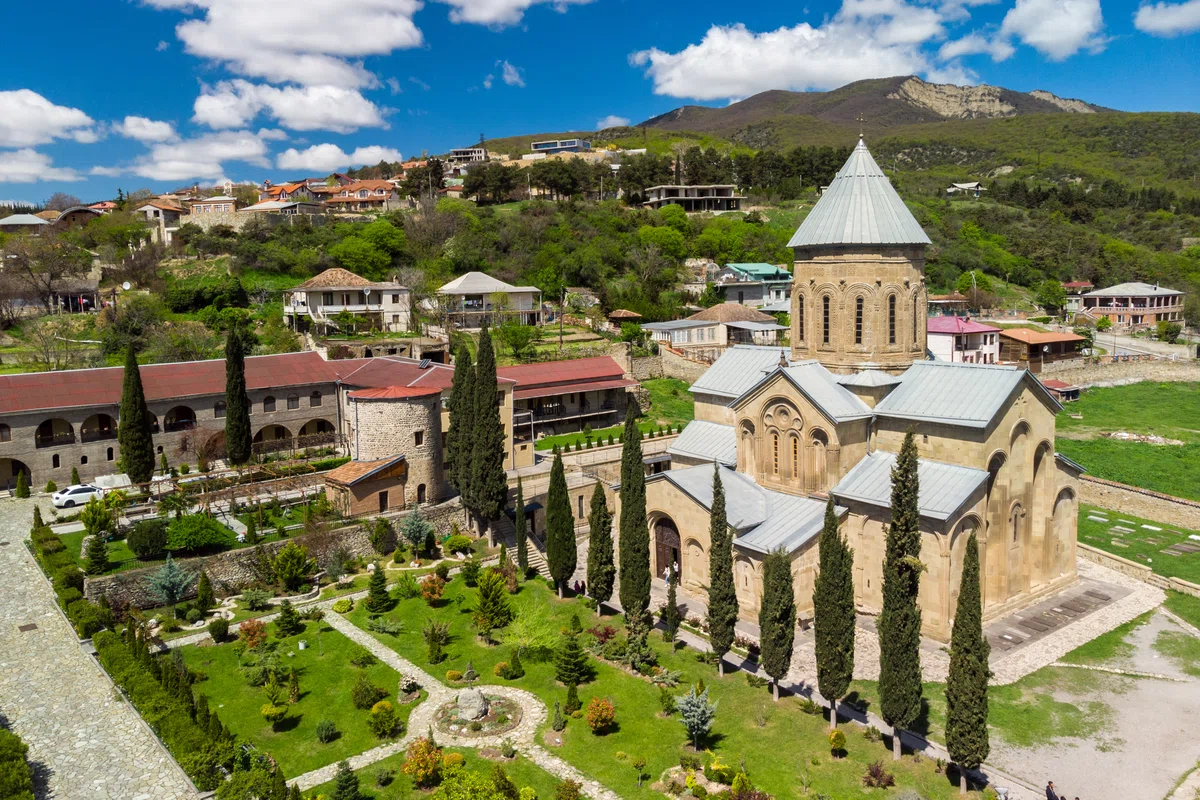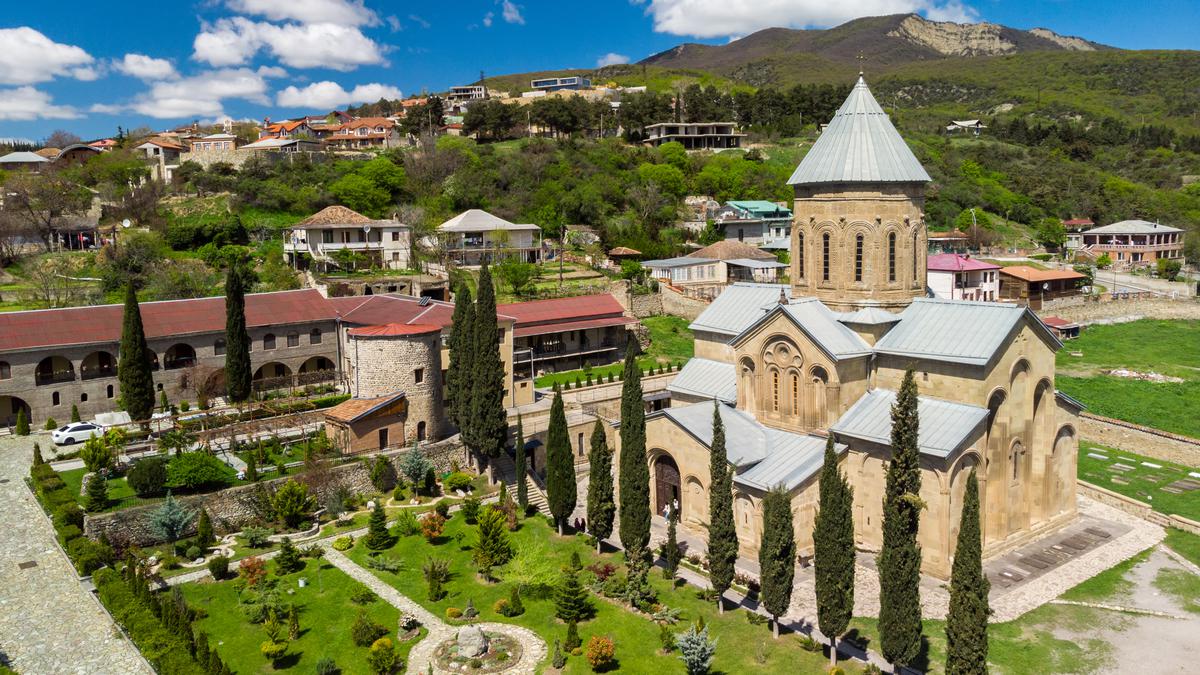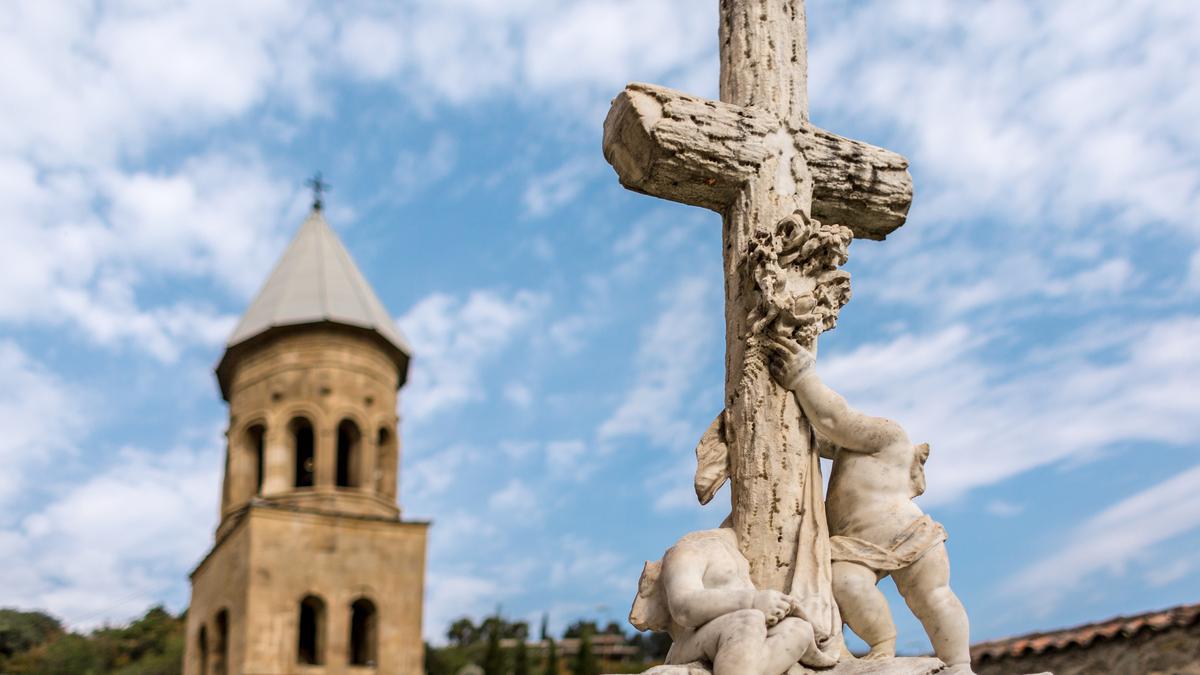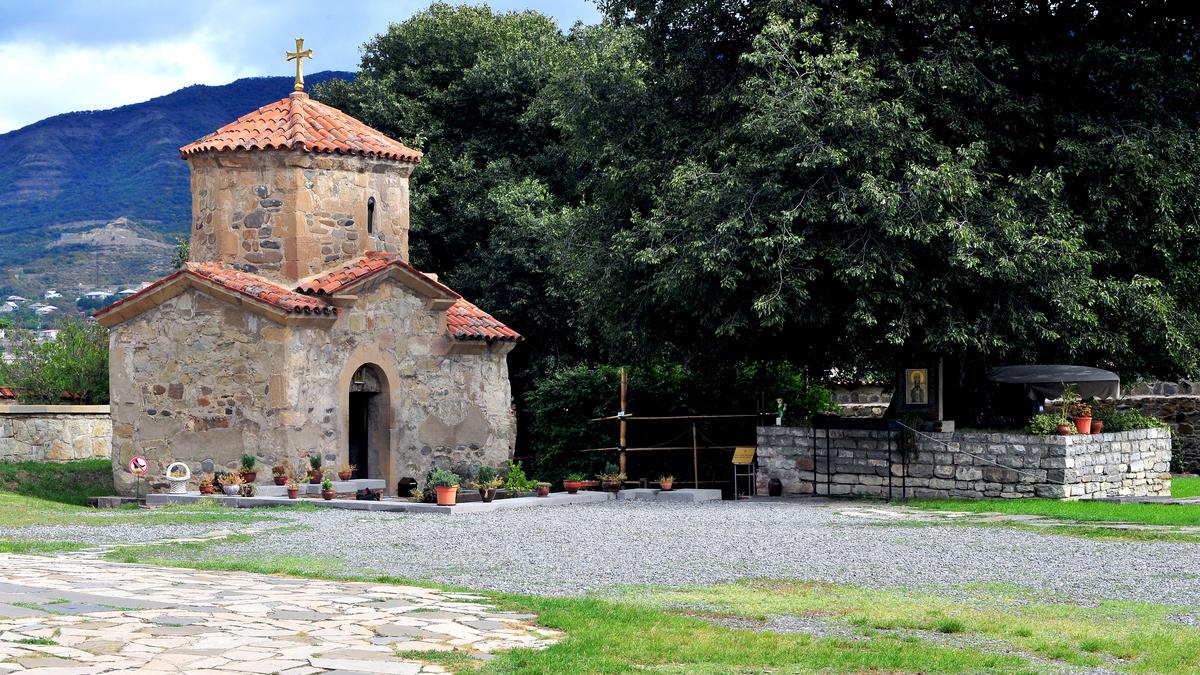
Cultural heritage - Samtavro monastery. History and architecture of one of the most significant monuments of culture in Georgia.
If you come to Mtskheta, do not forget to visit the Samtavro Monastery. In the blog "MadLoba" you will find a lot of useful information about this place: photos, history, architecture (of the Main Temple, the Church of St. Nino), real reviews of people who have already visited the attraction
Visit Samtavro Monastery⬇️
- History
- Architecture of the Main Temple
- Architecture of the Church of St. Nino
- Bell Tower
In Mtskheta-Mtianeti district, in the city of Mtskheta, which for you can become the most beautiful place in Georgia, there is one of the most significant monuments of culture and art of the country. We are talking about the Samtavro Monastery.
It was here that Saint Nino spent most of her life, and King Mirian and Queen Anna are buried in this place. In addition, one of the Assyrian fathers, who bore the name Abibo Nekreseli, was laid to rest in Samtavro.
History
The monastery complex combines more than one structure. This is the main temple, the church of St. Nino, as well as a bell tower and a fence with a tower. The exact time of construction of the main temple remains unknown, but it dates back to the XI century. The smaller church of St. Nino belongs to the same century, but there is information that the first construction of the church took place in the fourth century during the reign of Mirian.
The church is mentioned in the biography of Saint Nino. The history of the monastery itself dates back to 1820. A dozen monozones in Mtskheta laid the foundation for the appearance of the monastery. At the time described, monastic life in Georgia was gradually decreasing. In addition, the monozones were the restorers of St. Nino's Church.
During the Soviet Union, they tried to preserve the monastery as diligently as possible.
Nowadays, the Transfiguration Cathedral and the Chapel of St. Nino have been restored.
At the moment, various workshops are functioning in the monastery: art, sewing and others. The monastery is working on separate editions. This is the “Principality” and the “Monk's Diadem”, which contains memories of Monk Gabriel.

Architecture of the Main Temple
The sights of Georgia are largely distinguished by an interesting architectural solution and interior decoration, Samtavro is no exception. The main temple, the Church of St. Nino, the bell tower and the fence with the tower are combined into the Samtavro complex.
The main temple is a cross-domed structure. Its walls are built of yellowish-brown stones, the frames are well smoothed. Two pillars standing separately and the walls of the sanctuary are the supports for the dome. The apse in the eastern side of the temple is shaped like a semicircle, it is surrounded by a fairly wide bema. The capitals, bases and supporting arches of the support are profiled in the temple. Inside the building there are high ceilings, the space is united, everything is harmoniously combined in it.
Inside the hall is arranged according to the traditions of the medieval Georgian cross-domed temple. The entrance is through the gate from the south. In 1823, an earthquake occurred, as a result of which the dome collapsed. But it was re-installed at the turn of the XIII -XIV centuries.
The facade of the building on the east side is quite simple, but concise. It is decorated with a scheme of their five solid arches. In the center there is a window, which is decorated with a sapphire with a horizontal clasp, as well as intricate weaves on the sides of the window. The side windows of the facade and the cross located in the front side of the pediment date back to a later period of time. The facade from the east is decorated with a low figure, which I date from the IX century.
The western facade remained without significant damage. It is decorated with simple arches.
The facade from the south can be characterized by soft profiles and interesting patterns. The paired window in its center is decorated with wide edges framed by a decorative arch.
On the northern facade there is a building of one floor, also dating back to the XI century. It fits perfectly into a single complex of the temple. The altar and the dome of the main temple have preserved fragments of paintings of the XVII century. However, most of the altar has not been preserved.
The tombs of Mirian and Nana are located in the southwest corner of the building.

Architecture of the Church of St. Nino
St. Nino's Church is a small domed building. Cobblestone and brick were taken as the building material for it. The outline of the church is rectangular from the outside, the neck of the dome with eight corners is built along a rectangle. Narrow arched windows open from the east nave. A semicircular niche covered with a shell is located on the north side of the apse. The form of a semicircle is worn by the triumphal arch, the western arch, supported by consoles, the entrance arch, as well as the outer western niche.
Fragments of the life of Saint Nino and other stories are viewed in the interior.

Bell Tower
The bell tower is a three–storey structure of the XV-XVI centuries. Its walls are lined with smoothed squares of yellowish-gray sandstone.
The first floor is built in the form of a square, and the northern facade is built into the fence wall. The storeroom can be entered through a wide entrance in the form of a cylindrical arch.
The second floor opens from all sides with double arches.
Panchatur, which can be accessed from the second floor, has a pyramid-shaped roof with several levels.
The fence was supposedly built in the XVIII century. Only the cylinder-shaped tower has survived from it.
The cemetery stretches in the north and northeast sides of the fence.
Samtavro is one of the most important and recognizable sights of Mtskheta, its architecture is unique. Therefore, the Samtavro monastery complex is what you need to see in Georgia to get acquainted with the culture of the country.












27 comments
Log in to leave a comment